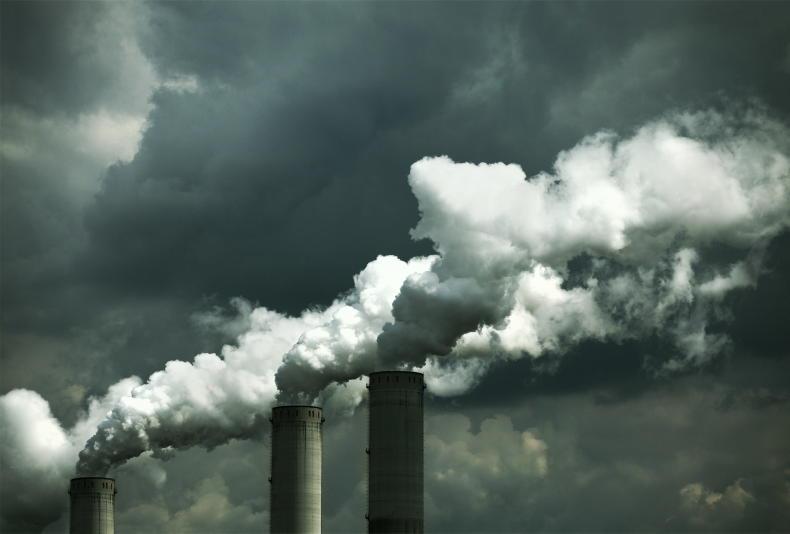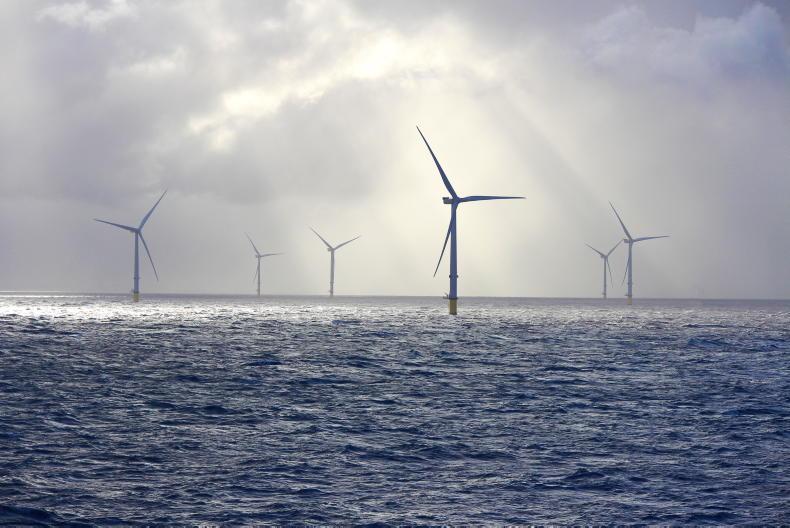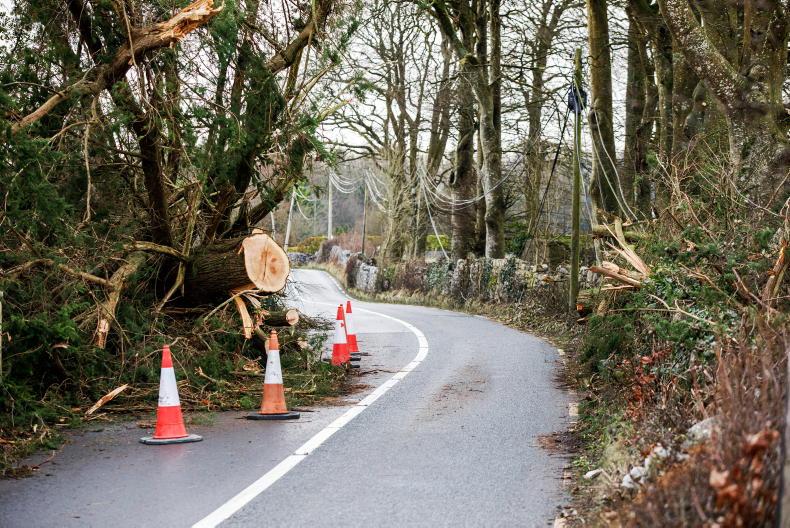Did anyone else open their CSO farm survey yet? Most farmers are probably busy in the sunshine, at hay or silage or slurry or spraying or some summer tidying up or maintenance.
Many, like me, only finished their BISS applications this week, complete with ANC and eco schemes and ACRES and tillage inclusion and Straw Incorporation Measure details.
The last thing you would want to do after that is fill up another form about acres of this and hectares of that.
I was sitting here trying to finish (start) this column, so naturally I opened the envelope like it was a birthday card. And had a read of it, although leave it to the weekend to fill it.
Irrigation
What interested me was the questions about irrigation; not just one or two questions about irrigation - 25 questions about irrigation.
I was asked if I use irrigation equipment; what for; how many hectares are irrigated; how much water do I use; where does the water come from; what type of irrigation system is involved. A lot of questions.
Water, so abundant in Ireland that we take it for granted, but its usage is suddenly under serious scrutiny.
The 14th question really caught my eye. “Do you pay for water used for irrigation?”
Is this a window into the future? I heard anecdotal stories last year of farmers in north Dublin who were downstream of other potato and vegetable growers not having any water left to irrigate their crops, as most of the reduced flow was used by those upstream of them. It’s another little indication of climate change.
To use a scientific term, we aren’t going to get within an ass’s roar of them
On Friday morning, the Environmental Protection Agency (EPA) proclaimed that we are on course to fall short of our 2030 carbon reduction targets under the Climate Action Plan.
The target is to reduce overall emissions by 51% from their 2018 levels - we are on track to reduce them by no more than 30%. To use a scientific term, we aren’t going to get within an ass’s roar of them.
This will renew the calls from one side that the sectoral targets, including agriculture’s 25%, are not ambitious enough, and that we must redraw the plan, even though the ink is barely dry on it.
It will also see the other side state that the target is unrealistic in such a short timeframe and that taking more radical measures to achieve a halving of emissions in nine years will butcher large parts of the economy.
Briefing paper
Perhaps it’s in this context that we have to evaluate the importance of the briefing paper that emerged this week regarding a potential dairy cow cull and its eye-watering cost.
The story, first reported by Ciarán Moran in the Irish Independent, spoke of Minister Charlie McConalogue being told that we would have to spend €600m over three years to slaughter 200,000 cows to meet an even earlier carbon reduction target - the 2025 intermediate halfway target.
Most people are aware of the 25% reduction target for 2030 for agriculture. The Climate Action Plan is actually structured slightly differently.
There are carbon ceilings for each sector for each of two five-year periods 2021-2025 and 2026-2030. The 2030 target is encompassed in that second five-year carbon budget.
The raw figures are as follows: the base year emissions from agriculture were 23Mt CO2 equivalent. The total carbon budget for 2021-2025 is 106Mt, which breaks down to 21.2Mt per year.
The 2026-2030 budget is 96Mt, which equates to 19.3Mt per year. And the single year target for 2030 is 17.25Mt, a reduction of 30%.
Other reality
The other reality is that 2030 is not an end in itself, but an important staging post on the nation’s stated journey to absolute carbon neutrality by 2050.
That’s why we need to be always focused on the long-term sustainability of the measures we take in pursuit of the 2030 target. This is not about dipping for the finishing line in a sprint, it’s about establishing a steady and maintainable rhythm for a marathon.
In that regard, it would be ludicrous to cut cow numbers to meet the intermediate target of an intermediate target.
It would be similar to a team gambling by throwing everything at gaining a lead for half-time, pouring forward in such numbers they risk conceding scores. What would be the point? The score that matters is the one at full-time.
That said, you can’t afford to fall too far behind either. Much of the coverage of the 2021 sectoral emissions revealed by the EPA focused on agriculture’s increasing share of Ireland’s total emissions.
That is to some degree misleading, as other sectors, particularly transport, industry and construction (built environment) were massively affected by COVID-19 lockdowns through 2021.
We are going in the wrong direction and have failed to shift off the 2018 base year emissions
It’s more instructive to look at the actual emissions and where they are in relation to where they need to be. The news isn’t great.
The emissions from farming in 2020 were 22.81Mt CO2 equivalent and in 2021 they were 23.26Mt. We are going in the wrong direction and have failed to shift off the 2018 base year emissions over the first four years.
Against this backdrop, the prospect of a paid-for voluntary dairy cull becomes more likely. It is also likely that the tightening around dairy intensity will continue. While the farm organisations are fighting to retain the nitrates derogation upper limit of 250kg organic N/ha, it might be an achievement to keep the derogation at 220kg.
For people who don’t farm livestock, to whom this must look like Mandarin, these figures refer to the maximum kilogrammes of organic nitrogen that can be allocated to each hectare on a farm.
Cows and cattle are allocated organic N loadings according to their type, size and function. Since the start of this year, the loading for dairy cows has been increased in a process called ‘banding’ to take account of their high-output, high-input lifestyle.
Billions involved in cow cull
The €600m it would cost the Government to buy out 200,000 cows is only one of the costs such a cull would involve. The loss of about 12% of the dairy herd could lose the economy over half a billion euros a year. That figure is based on the dairy sector’s value in 2021, before the price spikes of last year.
That’s just a small window into the scale of losses that culls - forced or voluntary; imposed or incentivised - will inflict on the rural economy. The KPMG report, commissioned by the Irish Farmers Journal was dismissed as irrelevant by Government when released in late 2021. It still stands as the best indication of the economic stakes at play if we cut farming output to meet our 2030 targets.
The fact the Food Vision Dairy Group haven’t met since early this year means there hasn't been flesh put on the bones of the half-dozen recommendations made. If there is a tentative consensus among stakeholders in favour of a voluntary buyout, it would be good to move toward that goal. I understand the group meet later this month, I won't be the only one watching with interest.
The Food Vision Dairy Group’s recommendations show that the Marginal Abatement Cost Curve (MACC) developed by Teagasc five years ago is still effectively the only show in town. The first four recommendations all relate to MACC measures, the fifth is the voluntary cow cull.
The sixth and final recommendation is an interesting one - “Adopt a common co-op charter on sustainable milk production based on the family farm model.” Is that a bell tolling for platforming, franchising dressed up as ‘partnerships’? It sounds quite like it, and perhaps not before time. If we are to have a limit on dairy cow numbers, a limit below current numbers, owners of smaller herds will have to be given priority to whatever space exists for expansion.
Rewetting battle a toxic debate
Like every farm, ours has some poorer land. In our case, there is some bogland - not peat, but marl, a clayey, sticky kind of soil, like the marla we played with in school (I always wondered if there was a link in the names).
Anyway, there is a seam of peatier soil along by the river. When I was a child, we would go down to the ‘shake’ in the spring, in our wellies, and jump up and down on the waterlogged soil until the crust broke.
Water would burst up, along with a foul smell. I now know that smell was of methane and nine-year-old me was releasing climate-changing gases into the atmosphere. I’ll have to live with the guilt.
There’s a similar foul smell around some of the debate concerning rewetting - the prospect of a deal among EU members for nature restoration targets has been tarnished.
On Wednesday, the European People’s Party (EPP) walked away from talks among the European Parliament’s various factions regarding rewetting targets. They are the largest grouping, with 175 of the 700 seats in Brussels/Strasbourg.
A sidebar. It’s absolutely ridiculous that the European Parliament meets in two separate cities, with the whole carnival traipsing down to Strasbourg for a week every month. It’s a legacy of the carve-up between the original six members, with the Commission in Brussels, the European Court of Justice in Luxembourg, and so on. Perhaps before demanding any more of the rest of us, they could downsize to one parliament themselves - the carbon footprint must be absolutely enormous.
Anyway, the EPP has grabbed headlines, been praised by farmers and castigated by environmental activist organisations. But we’re going to have to agree on targets, whether now or next year.
The temperature in Siberia had hit 30 degrees
The mood toward farmers could darken by then. On Wednesday, as the EPP was staging its walkout, the French government added its voice to those of Spain, Portugal and Italy looking for emergency aid for drought. In May.
We also heard that the temperature in Siberia had hit 30 degrees. In May.
At home, farmers are getting anxious that weather is settling into a long, dry spell. We don’t need rain yet, but we soon will.
Last year, the little river on our farm failed to have sufficient flow to feed the couple of irrigators along its banks to keep potatoes and cabbage growing.
The one saving grace is heavy dews, which are helping growing grass and crops no end. Bare fields probably need a more substantial drink.
And farmers know that no matter what happens, they can’t mention fodder crisis. Because if they do, they’ll be told the problem is not too little fodder, but too many cows.
Many think we may see a revision of farming’s carbon targets and of the food versus other land uses debate if food supply and/or price is threatened by a summer of extreme heat, flash floods and forest fires.
Perhaps they are correct and the need to grow food will supersede the need to reduce the carbon footprint of food production.
A summer where the true nature of climate change reveals itself in a way never before seen in Europe is, for my money, more likely to harden opinion that more drastic carbon reduction is needed - rewetting, cow culls, the whole shebang.
Farming’s priorities might be jettisoned like ballast from a balloon that is losing altitude and hurling towards disaster.










SHARING OPTIONS